 | 2009 NGLLC, Armadillo and Scorpius - 09.09.14 (2011-06-20)      The 2009 NGLLC is well underway and we already have a winnder for the Level 2 prize, although we're not quite sure who that will be yet. In this daily we show the possible winner, Scorpius from Armadillo Aerospace and explain the contest itself.
|
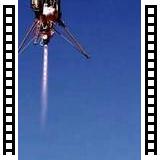 | 2009 Northrop Grumman Lunar Lander Challenge Winners - 09.11 (2011-06-20)      Ok, so we've told you the basics on the Northrop Grumman Lunar Lander Challenge and if you missed them you can head to our website and search for NGLLC. But, what you haven't heard is the unofficial, soon to be official outcomes. Qualifying Level 2 Masten Flight - www.youtube.com Slow Motion Unreasonable Rocket footage - www.youtube.com
|
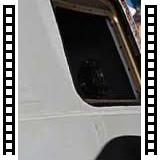 | A new beginning for America's Space Programs - Spacevidcast Live SVC-12M (2011-07-31)      In tradition of not wanting a launch (or live show) to end in the number 13, this episode has been re-named to SVC-12M. Why that numbering system? Well, we explain it in the open of the show! A lot of amazing stuff is happening within America's Space Programs on the 50th anniversary of JFK's iconic moon landing speech we talk about people stuck in the past of Apollo and some of the advantages of moving forward with companies like SpaceX. After the break we have some awesome video from Endeavour's solid rocket booster cameras as well as a Soyuz station flyaround with the Space Shuttle stuff attached to the International Space Station For more details on each story covered in this episode, visit the wiki article: wiki.spacevidcast.com and remember that if you would like to get your hands on the Spacevidcast After Dark SVCAD-12M episode you can sign up for Spacevidcast epic to get your hands on that and other amazing content. www.spacevidcast.com
|
 | Armadillo Aerospace MOD first flight in the first set (2011-06-22)      This is the first launch attempt of Armadillo Aerospace's MOD rocket at the 2008 X PRIZE Foundation's Northrup Grumman Lunar Lander Challenge
|
 | Armadillo Aerospace MOD first flight in the second set (2011-06-20)      This is the second launch attempt of Armadillo Aerospace's MOD rocket at the 2008 X PRIZE Foundation's Northrup Grumman Lunar Lander Challenge
|
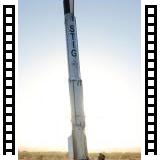 | Lessons Learned - Live Show 4.16 (2011-08-19)      Sometimes launching rockets isn't as easy as it may seem. Armadillo Aerospace is a NewSpace company looking to take you and me to the stars. Led by fearless leader John Carmack this amazing little startup is cranking away at next generation vehicles. Sometimes things don't always go according to plan. We take a peek at a couple of crashes and big bada booms. Speaking of NewSpace, Virgin Galactic is looking beyond sub-orbital tourist flights to LEO and even uber short trips between continents. Beyond just awesome space trips, it is possible that Virgin Galactic will change how we fly and make the world an even smaller place.
|
 | n3rd crush, possible STS-134 delay, SS2 and more! Live Show 4.08 (2011-07-31)      The wiki article containing links and additional information on each story can be found here: wiki.spacevidcast.com Stories covered: NASA Tweetup Nerds ZOMGDUDELOLZ! Possible delay of STS-134 to April 29th, 2011 The stacking of the final Space Shuttle SRBs is underway Ariane 5 rocket failed to lift off from it's launch pad. First images of Mercury from MESSENGER The Aurora from Norway Yuri's Night Contests deadline EXTENDED! BBC has the first journalist allowed inside of SpaceShip 2 SpaceX video touts Something Big is Coming And as a reminder, this was our April 1st show. While it would be awesome to be a part of Masten Space Systems, that was our little prank. Hope everyone enjoyed it!
|
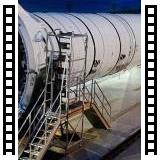 | NASA and ATK's DM-2 Test Firing - SpacePod 2010.09.07 (2011-05-31)      The deserts of Promontory, Utah came alive with fire and thunder as NASA and ATK tested the Development Motor-2 (DM-2). The five-segment, first-stage of the Ares rocket was activated at 9:27 am MDT on Aug. 31. The still morning air surrendered its silence to the sound of unleashed technological thunder. The surrounding countryside was bathed in the colors of fire as a huge plume of fame shot out the back of the solid motor. The DM-2 test was conducted to gain data on some 53 designs incorporated in this system. Some of the elements tested include the redesigned rocket nozzle, new insulation used in this design and the motor casing's liner. When activated the DM-2 produced an estimated 3.6 million pounds of thrust -- equaling 22 million horsepower. The motor had 760 instruments incorporated into it these instruments worked to collect vital information regarding the rocket's performance when it was fired. The horizontal ground test firing is what is known as a "cold motor" test. This is accomplished by chilling the DM-2 down to 40 degrees F. This is done to measure how the motor performs at very low temperatures. The test also was held to prove out design specifications of new materials used in the motor joints. These new elements will eliminate the need for the joint heaters that are currently used. (these heaters were required in the 4-segment version of the motor's design). It is hoped that with the addition of these new modifications weight will be dramatically reduced ...
|
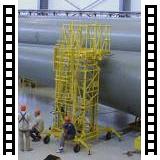 | Shuttle Program ends, Russian Program Expands - SpacePods 2010.07.07 (2011-06-03)      While the Space Shuttle Program may be winding down, the Russian Soyuz program is in high demand. This is your SpacePod for July 7th, 2010.-------With the Space Shuttle Program winding down the Russian Soyuz rocket is about to be in high demand. Not only has the United States purchased tickets aboard the Russian built capsule to help ferry astronauts to the International Space Station after Shuttle retires, but now Canadian and European officials are looking to purchase dedicated Soyuz capsules for their own astronauts.This is really great news. Now that shuttle is retiring, there is a need to fill that gap with human rated rockets and spaceships. The doors of opportunity will be opening up for companies such as SpaceX and Orbital to come in and provide not just cargo services but crew as well. Sure, it does kinda suck that we're losing the Space Shuttle Program, but in its place we're forming a space industry. Just imagine what this whole new industry will look like 5 to 10 years from now. Very exciting stuff.And speaking of the Soyuz rockets, Arianespace is working on finishing up their all new launch pad designed specifically for the Russian designed Soyuz craft. This new launch complex is being built in the Guiana Space Center which is a French run spaceport located in Kourou, French Guiana. This has been the launch site of over 200 Arianespace rockets since 1979 and soon it will be the launch site of Soyuz rockets as well. This is the first time a Soyuz rocket will ...
|
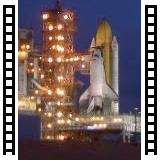 | Space Shuttle Discovery at the pad - SpacePod 2010.10.13 (2011-06-19)      CAPE CANAVERAL -- The space shuttle Discovery, its nosed pointed toward the sky, its belly attached to the massive, orange External Tank (ET) and twin Solid Rocket Boosters (SRB) slowly but surely emerged from the cavernous Vehicle Assembly Building at 7:24 pm EDT on Sept. 20. This marks the final time Discovery is scheduled to make the 3.4 - mile trip to Launch Complex 39A (LC39A) in preparation for her last planned mission -- STS-133.Bathed in spotlights Discovery's last rollout was a bittersweet moment for workers that have cared for the orbiter. Discovery was rolled out four hours earlier than normal so that workers could take pictures. Rollout is conducted in the evening hours to prevent potential damage from possible lightning strikes. The crawler-transporter moves at a blistering mile-an-hour, but despite this slow speed, the vehicle and its precious cargo create an amazing spectacle.Discovery is currently scheduled to lift off from LC39A on Nov. 1 at 4:40 pm EDT. Afterward Discovery will be maintained in flight ready condition in case the orbiter is needed to fly a possible rescue mission. After the end of the shuttle era, Discovery will go to the Smithsonian Air and Space Museum located in Washington DCThere are two crawler-transporters that NASA has used to transport spacecraft from the VAB to LC39A. They were originally used to transport the mighty Saturn family of rockets during the Apollo era. The crawler-transporters were designed by Bucyrus International ...
|
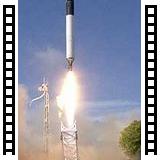 | SpaceX - Falcon 1 Flight 5, RazakSAT payload (T-2 to SECO) (2011-06-15)      Launch of the RazakSAT satellite via a Falcon 1 rocket
|
 | SpaceX and Iridium, Rocket teeth and more! Live Show 3.21 (2011-06-03)      SpaceX has won a contract to launch over 60 new Iridium satellites in to orbit. Did you know Iridium was actually still around and launching new birds? Me neither.
|
 | SpaceX Falcon 9 Flight 2 Launch Webcast (2011-06-17)      This is the live webcast for the Falcon 9 Flight 2 from Space Exploration Technologies or SpaceX. The second Falcon 9 rocket launched for SLC-40 in Florida carrying the first Dragon COTS demo unit.
|
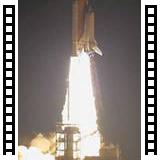 | STS-131 Launch via Space Shuttle Discovery in HD - 04/05/2010 (2011-09-28)      At 10:21 UTC on 04/05/2010 one of the final four Space Shuttle missions lifted off for Kennedy Space Center in Florida. Space Shuttle Discovery and her crew of 7 will be bringing Leonardo to the International Space Station for a two week and three EVA stay. This is the HD Ascent video as seen on Spacevidcast in the live HD channel.
|
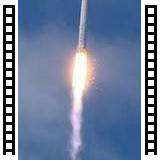 | The first SpaceX Falcon 9 Rocket Flight (2011-05-31)      On June 4th, 2010 at 14:30 UTC the first ever Falcon 9 rocket lifted off from Space Launch Complex 40, Kennedy Space Center, Florida. Carrying the Dragon Spacecraft Qualification Unit this flight was designed to test not only the vehicle itself but also begin tests of the Dragon capsule. Oh yeah, and AWESOME names for the vehicles!
|
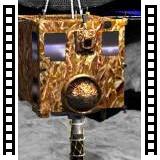 | The little spacecraft that could: Hayabusa - SpacePod 2010.06.22 (2011-05-29)      Last week JAXA had a huge success in safely landing its Hayabusa craft in Australia. But before we go in to that, lets back up and talk a bit about what Hayabusa is and how we got to this point.On May 9th, 2003 at 4:23 UTC the Japanese solid fueled rocket M-5 launched from the Uchinoura Space Center. Aboard was a little spacecraft designed to do something no other vehicle had done before. It would approach an asteroid, hover, take a sample and return the sample safely to Earth. Hayabusa would not land but rather touch the surface with its sample capturing device and then move away, so we're not to call it a lander.Four ion engines kept the petal to the metal for 2 years straight and in 2005 the craft rendezvoused with the asteroid Itokawa. That asteriod was actually not its initial target. Originally Hayabusa was supposed to land on the asteroid 4660 Nereus, but a faulty M-5 rocket forced a delay which pushed the asteroid out of our reach. But that's not where the trouble started or ended.Even prior to the launch there were some problems. The non-lander was to deploy a small rover designed by NASA and developed by JPL on to the surface of the asteroid, but was cancelled due to budget reasons. Minus 2 points US. Then in 2002 JAXA needed to re-check the O-rings of their rocket as it was found to be made of a different material than was specified, and thus the launch was pushed the launch back to 2003. Finally after it did take off the Hayabusa spacecraft got slammed with a ...
|
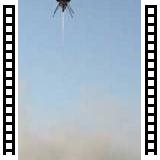 | Winning with Rockets at the 2009 Northrop Grumman Lunar Land (2011-06-21)      As if it wasn't exciting enough, this year's Northrop Grumman Lunar Lander Challenge is getting more and more interesting each day! At the start of this competition season we had three teams competing... and now we have four: Armadillo Aerospace, Masten Space Systems, Unreasonable Rocket and the newcomer Bon Nova.
|







































































































